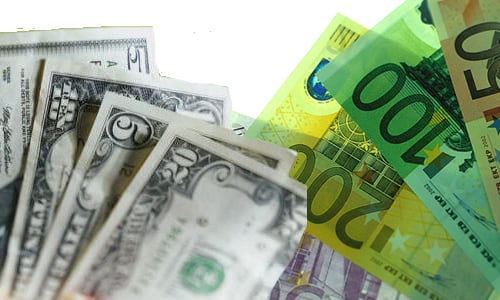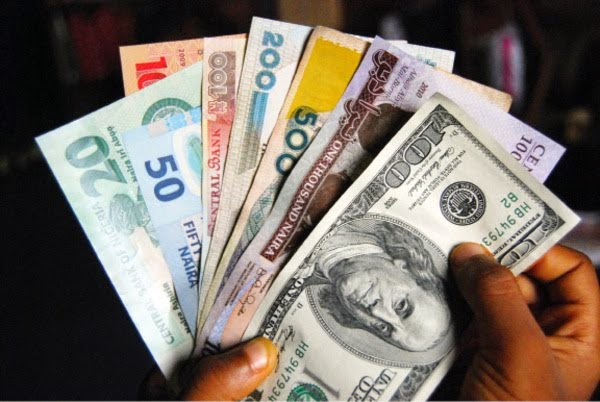The Eurodollar is continuing to sink down the charts with the latest, in what has become a repeated streak of recording fresh multi-year lows being registered at 1.0593. From a technical standpoint, the EURUSD appears vulnerable to further sudden declines and any small bullish swings higher is probably providing traders with an opportunity to sell on rallies. With the economic outlook for Europe so bleak, and the ECB entering a new era of monetary easing even by its own ultra-loose standards, the EURUSD decline to parity is appearing inevitable and likely to happen much sooner than anyone envisaged.
To be honest when you combine together the fact that the divergence in economic sentiment and monetary policy between the United States and everywhere else is stretching further and further, alongside the ECB actually launching QE providing the markets with a further reason to expect continued currency weakness – we are probably going to sink below parity. The lowest low for the pair can be found at around 0.8225 and as steep as a drop as this sounds, my attitude towards whether it can happen is “never say never”. Afterall, we are talking about a pair that has dropped from 1.39 to 1.06 in around nine months and this complete divergence in sentiment and monetary policy between the US and Europe will be evident for a long time. In regards to the complete lack of progress with the negotiations taking place over Greece, this just adds a further weight to the Euro pressure.
ECB President Mario Draghi spoke earlier this morning at a conference of economists and central bankers, which could start becoming a bit of non-event in the future because he no longer needs to make dovish comments to inspire currency weakness. To put it quite simply, the EURUSD decline is signed, sealed and continuing to be delivered. There was an air of modest optimism when GDP revisions were revised upwards, which I found confusing because it occurred after countless downgrades in projections. There was nothing in the upward GDP revisions whatsoever that was going to prevent the EURUSD downtrend because the levels of concerns over stagnant economic growth and low inflation remain at elevated levels.
The excellent USD run of form is continuing with the Dollar still pushing higher against its trading partners. The question is being asked now whether a US interest rate rise has been priced into the USD, however I think this question is missing the focus point. The outstanding USD run of form is not just correlated to reaffirmed expectations that the Federal Reserve will have to raise interest rates at some point, it’s also because so many other central banks are easing monetary policy that it is providing momentum for the USD to push itself higher against its trading partners. As far as I am concerned, there are three different types of central banks right now and it goes as follows:
Advertisement
- The hawkish who are on the verge of raising interest rates at some point soon (Federal Reserve)
- The neutral who very much have a laissez-faire attitude towards interest rates right now (BoE)
- The dovish who have eased monetary policy this year in an attempt to devalue their currency (around 20 and counting)
The US economy is really set apart in many ways right now and regardless of interest rates or not, the money from traders is on the table of the US economy. With the risks being present that other central banks could still ease monetary policy further, this in itself provides enough reason to believe the USD will continue to push higher – even before US interest rate hike optimism reaches new levels.
Advertisement
It has occurred much sooner than expected, but the USDCHF has returned to parity after reaching 1.0038. There is an obvious correlation on the charts that if the Euro weakens, the CHF is weakening in sync with it. The question regarding whether the Swiss National Bank (SNB) has set another minimum exchange rate against the Euro is yet to be answered. The charts in its own right provides enough evidence that this is either occurring, or another large financial institution is hedging on it. CHF weakness is going to be a continued trend because most economic data in the coming months is going to be negatively impacted by the stronger CHF, while the comments from SNB President Thomas Jordan that the currency was clearly overvalued provides me with suspicions that monetary easing is on its way from Switzerland.
Due to the reaffirmed optimism over the consistent progress the US economy is making, the longer-term bearish expectations for metals are being further underpinned. Gold has now dipped to another four-month low at $1155, but I don’t think we are absent from any potential swings higher because the Federal Reserve will not hike interest rates as soon as the USD bulls want. The oil markets appear to be under some pressure before the latest set of US crude inventories data is released. It’s probable that US inventories are going to continue rising, which means the concerns over an oversupply in the market are going to be in the headlines once again.
The positive news for the oil bulls is that last week’s Federal Reserve Beige Book did provide at least an initial indication policymakers are a little bit more concerned about the decline in price, than Janet Yellen was previously letting on. I am now looking ahead to the reportedly scheduled OPEC meeting taking place between May-June and I have a suspicion that not only will the oversupply of around 2million barrels a day be a hot topic, but that someone might be willing to cut production.
Follow Jameel on Twitter @Jameel_FXTM
Advertisement
For more information please visit: Forex Time
Add a comment







